CAT4 level tests are different versions of the test catering for children who are in different grades in primary school and high school. The table below provides you with a brief summary and CAT4 level breakdown. CAT4 Level X and Level Y are for year 1 and 2 and have a different structure. CAT4 Level A to Level G is for year 3 to year 12 and above. Use the information below to decide which level your child should practice on.
| Age range | CAT4 level | England & Wales | Scotland | Northern Ireland | Ireland |
| 6 years – 7 years 11 months | CAT4 Level X | Y2 | P3 | Y3 (P3) | 1st class |
| 7 years – 8 years 11 months | CAT4 Level Y | Y3 | P4 | Y4 (P4) | 2nd class |
| 6 years 8 months to 8 years 11 months | CAT4 Level Pre-A | Y3 | P4 | Y4 (P4) | 2nd class |
| 7 years 6 months – 9 years 11 months | CAT4 Level A | Y4 | P5 | Y5 (P5) | 3rd class |
| 8 years 6 months – 10 years 11 months | CAT4 Level B | Y5 | P6 | Y6 (P6) | 4th class |
| 9 years 6 months – 11 years 11 months | CAT4 Level C | Y6 | P7 | Y7 (P7) | 5th class |
| 10 years 6 months – 12 years 11 months | CAT4 Level D | Y7 | S1 | Y8 (F1) | End of 5th class/ 6th class |
| 11 years 6 months – 13 years 11 months | CAT4 Level E | Y8 | S2 | Y9 (F2) | End of 6th class/ 1st Year |
| 12 years 6 months – 15 years 11 months | CAT4 Level F | Y9 & Y10 | S3 & S4 | Y10 & Y11 (F3 & F4) | 2nd and 3rd Year |
| 14 years 6 months – 17 years + | CAT4 Level G | Y11+ | S5 & S6 | Y12+ (F5+) | 4th/TY/5th Year |
As you can see there is some overlap in the age groups which may be confusing but helps immensely when testing different age groups in the same cohort – it provides more flexibility in the testing and catches more children in a single test allowing for easier comparison and group scores. Schools use the results to decide on how to group children and determine the best way to deliver teaching so it is focused on the strengths and weakness of a particular group of students.
Try a CAT4 practice test by clicking below:
CAT4 PRACTICE TEST
CAT4 Level A-G Test Structure
CAT4 Level A – G each levels consists of 8 short online tests. The 8 CAT4 tests are split into 3 parts each checking a child’s foundational abilities in verbal, numerical, and spatial skills as shown below:
| Part 1 | Part 2 | Part 3 |
| Figure Classification Figure Matrices | Verbal Classification Verbal Analogies Number Analogies | Number Series Figure Analysis Figure Recognition |
Each test also has a time limit – I recommend repeating each test several times to make sure your child is ready for the real thing and is able to manage their time effectively to finish. The real tests will have time for instructions; but the actual CAT4 test time is shown below:-
| CAT4 Component | Duration | No. of Questions |
| Figure Classification | 10 minutes | 24 questions |
| Figure Matrices | 10 minutes | 24 questions |
| Verbal Classification | 8 minutes | 24 questions |
| Verbal Analogies | 8 minutes | 24 questions |
| Number Analogies | 10 minutes | 18 questions |
| Number Series | 8 minutes | 18 questions |
| Figure Analysis | 9 minutes | 18 questions |
| Figure Recognition | 9 minutes | 18 questions |
Early Years – CAT4 Level X and CAT4 Level Y
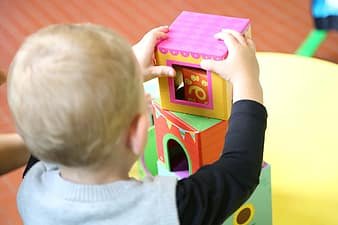
Measuring cognitive at an early age is difficult since children develop at different rates. The CAT tests make a good attempt at doing this with the Year 1 and Year 2 versions of the test being presented in a very, very simply format. Children of of this age group will require significant support. The tests are made up of of two parts each with two tests;
Part 1
Figures 12 minutes
Word 10 minutes
Part 2
Numbers 10 minutes
Shapes 11 minutes
Although these are not formal tests prescribed by the National Curriculum schools can still use them to assess and evaluate how well the children are doing, how they potentially likely to do, and what their individual learning styles are. This information can be used to inform teaching strategies providing support or challenge appropriately.
Generally teachers will do formative assessments during the school year to understand each child’s level but these tests only measure knowledge and don’t attempt to evaluate cognitive skills which are foundational to future success. CATs(cognitive abilities tests) provide this information and help to determine future approaches and can focus on both the weakest and strongest children to ensure no child is left behind and gifted children are appropriately challenged.
Even at such an early age understanding strengths and weaknesses of individual children and a group of children can improve our focus and provide a better experience customized to a child’s needs. Attainment in core subjects is important but by using the CAT4 tests schools have a broader view of each child’s capabilities and learning approach. Children of such an early age may be more accustomed to using a pen and paper so this option of delivery is also available.
CAT4 Test Instructions
Once instructions have been given by the teacher and the practice tests and examples been conducted, the real test will begin. During this time a timer will count down the time allocated. The timer cannot be stopped and in fact the time is a critical aspect of measuring a child’s brain processing speed. The test will timeout even if questions haven’t been completed so it is absolutely essential to make sure a time management strategy of some sort is in place.
CAT4 GL Assessment body does allow for a pen and rough paper for students to use and scribble on and make calculations. So tell your child to make sure one is available before the test or else previous seconds will be lost.
CAT4 Test Selection
It is recommended that the level of CAT4 appropriate for the year group being assessed is used – this is important if comparisons are made with other schools or past year results. It also helps by measuring cognitive development of children over a number of years to know how well your school is doing and if basic cognitive skills are improving between school cohorts. This information can help determine strategy and teaching plans to improve the overall school performance.
CAT4 Level Differences
The tests have been validated for each age group so the results are accurate but of course there are differences in their complexity. The two tests for CAT4 Level X (Grade 1) and CAT4 Level Y (Grade 2) consist of only 4 papers but they also contain much simpler questions.

An example question would be as simple as matching shapes – as seen opposite. Other questions will be a little more complicated with very simple patterns and counting exercises.
For higher levels of the CAT4 test complicated multi-step problems are presented requiring the student to work out intermediate solutions.
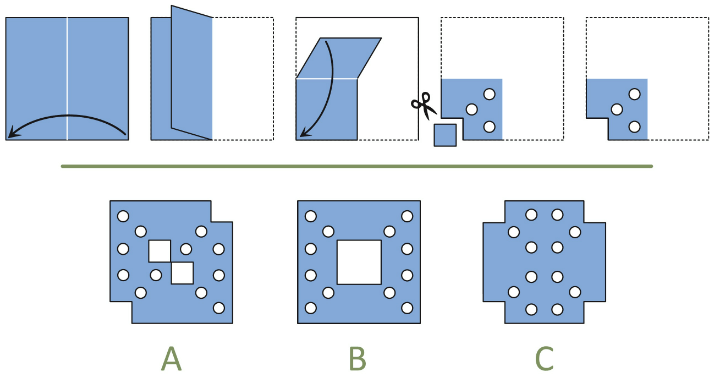
A younger child will have difficulty to understand the question above due to its complexity. Walking through the question the student needs to be able to visualize the paper once unfolded and can use a variety of strategies to do this. A simple but effective method is to use one corner of the paper as a marker to determine how the paper unfolds. This provides a simpler way of understanding the question but is a difficult method for a student in primary school to reliably use.
The answers presented in a question are just as important as the question itself – and this question highlights this fact in that the only answer with all four corners cut is C – so if the student has determined that all four corners are cut once the paper is unfolded the answer must be C – the holes and other patterns on the paper are simply a distraction. So the student not only needs to understand the problem but also to focus on the correct area and ignore any superficial information. At times the student may focus on the wrong information which does not lead to a definitive answer – in this case the student will have to back track (or take a best guess!).
The above complexity requires advanced cognitive skills and is required in the higher CAT4 test batteries. Having the ability to focus on the right information and determination to revisit a problem or change approach during the problem solving stage are all skills to score highly in the test. Time is an issue and is deliberately short to determine the student’s ability to process information at speed.
Teachers need to make sure they use the correct test level for their children. Parents shouldn’t worry if a child does not get full marks and be aware the test has been designed to make this extremely difficult if not impossible.


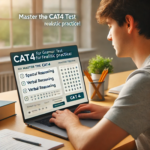
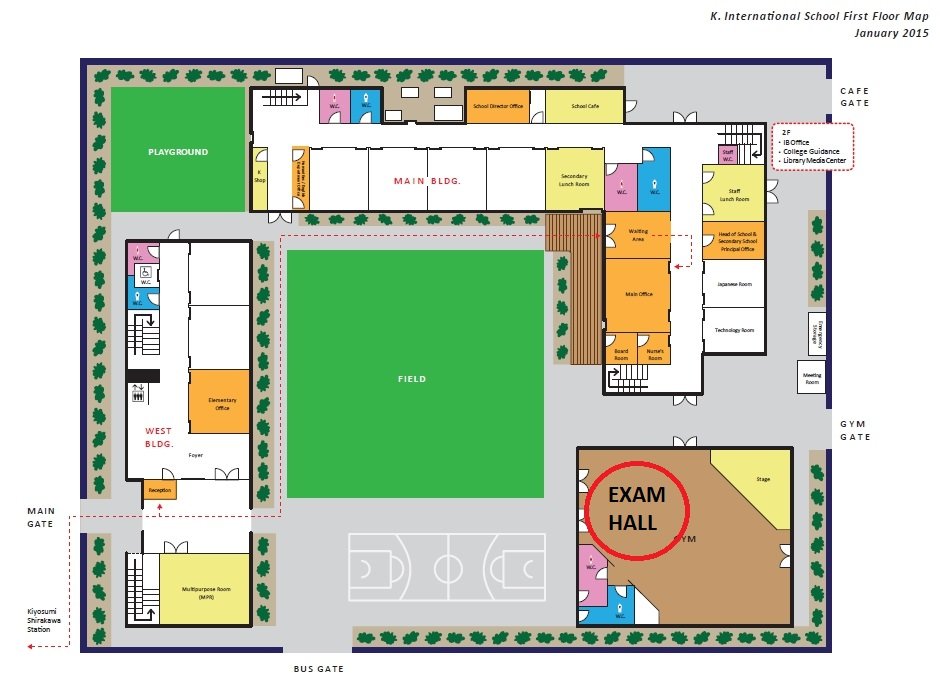

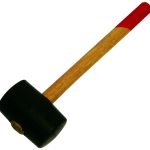
Is there any practice for users of LEVEL X? I can not find it here.
Sorry we don’t have the lower level tests.
The tests are a high Level D / E crossing into Level F in places. See the following page for clarification on the levels:
https://schoolentranceexam.com/cat4-levels/
Unfortunately at this time we don’t have any plans for Level X – we are aiming to publish new tests from Level A to Level G – Year 4 to Year 11+. The tests will be full screen, trackable and use a large bank of CAT4 questions.
Excuse me, do you have practice tests for Level G, please ? Year 12.
You can check out the page explaining the different levels on the site:
https://schoolentranceexam.com/cat4-levels/
The practice tests offered are focused on a high Level D / E crossing into Level F. Parents have had some great results with them at this level.
I would still suggest taking a look since there isn’t much else available as most of the time these tests are used as entry exams into private or grammar schools. Also in Year 7 cognitive tests are used to determine a child’s potential. The format, from my understanding will be the same even at Level G – and its a good idea to get used the online mode of delivery too. The site has been recently updated to show details about the answers.
Hope that helps.
We shall have the full range of Levels from Year 4 to Year 11+ by March 2023. There will be bank of CAT4 questions so each and every test will be different. There will also be tracking of your scores so the student can see if there has been any improvement.
Hi, my child is going to take the CATs for a grammar school Y10 entrance. Which level should my child be practising? Thanks!!
You can check out the page explaining the different levels and ages in the table.
The practice tests offered are focused on a high Level D / E crossing into Level F. Parents have had some great results with them at this level. Even at year 10 it helps with familiarity although the tests are relatively straightforward for someone of this age group – in this case you should aim for your child to get 90% and above.
Hello, My 2 kids will have test Cat 4 to enter into new school as we are moving from Singapore to Dubai.
– Marina is born August 3rd 2011. Which Cat 4 level she will have and where can we find some practice test?
-Elouan is born October 22th 2006. Which Cat 4 level he will have and where can we find some practice test?
Many Thanks for your help
We shall have the full range of Levels from Year 4 to Year 11+ by March 2023. There will be bank of CAT4 questions so each and every test will be different. There will also be tracking of your scores so the student can see if there has been any improvement.